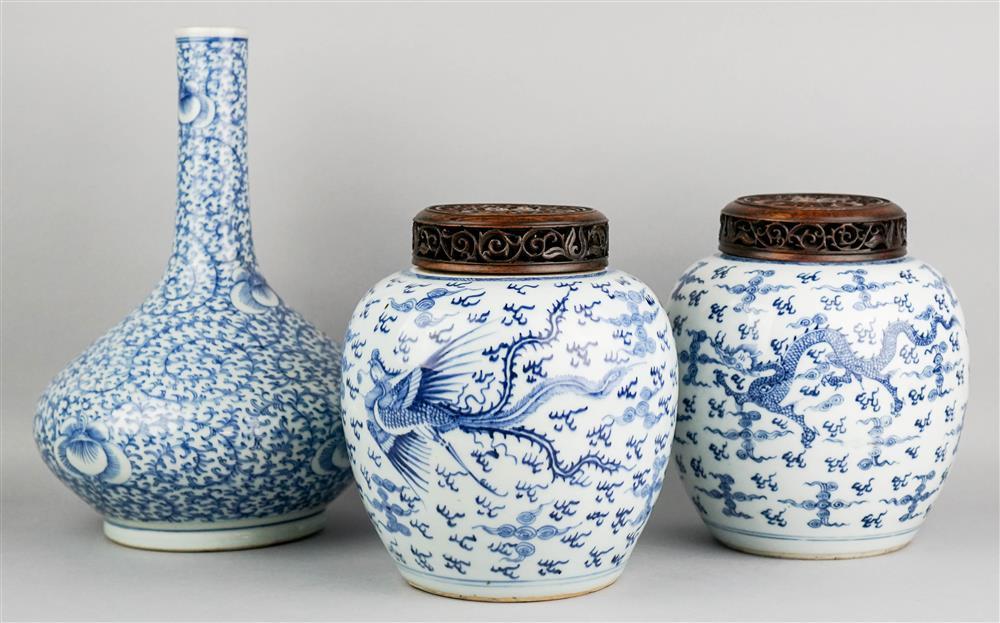The Chinese Qing dynasty (1644-1912) was a period of great technological achievements, including the development of fine porcelain wares. During this period, Chinese porcelain production reached its peak in terms of quality, creativity, and craftsmanship. This article will examine the history of Chinese Qing porcelain, the techniques and materials used to create it, and its impact on the world of art and design.
The history of Chinese Qing porcelain dates back to the early 1600s, when the potteries of Jingdezhen began producing fine wares for the Chinese court. The Chinese court had a great appreciation for porcelain and developed many new techniques to create intricate and beautiful pieces. The development of new glazing techniques and the introduction of new materials, such as kaolin clay and cobalt blue, allowed Chinese potters to create wares with stunningly vibrant colors and designs. Over time, the craftsmanship of Chinese porcelain wares improved and the range of shapes and styles expanded.
The production of Chinese Qing porcelain was highly regulated by the court, with strict standards for the quality of the wares. In addition, the court imposed various restrictions on the production and sale of porcelain wares, which included the use of certain materials, the size and shape of the pieces, and the types of decoration that were allowed. This allowed for the production of consistent, high-quality wares.
Chinese Qing porcelain was highly sought after by the wealthy and powerful of the day, and pieces from this period are still highly prized today. The intricate detailing and vibrant colors of Chinese Qing porcelain are admired by collectors and art enthusiasts alike. Chinese Qing porcelain has also had a great influence on the world of art and design. Many modern artists have drawn inspiration from the designs and techniques used in Chinese Qing porcelain, and the vibrant colors and intricate detailing of these wares are often seen in modern artwork.
In conclusion, Chinese Qing porcelain was a period of great technological achievement and artistic creativity. The high standards of craftsmanship and the intricate detailing of these wares have made them highly prized by collectors and art enthusiasts alike. Chinese Qing porcelain has also had a great influence on modern art and design, with many modern artists drawing inspiration from the designs and techniques used in the production of these wares.
Golden age of the Qing Empire
The Qing Empire, also known as the Qing Dynasty, was the last imperial dynasty of China, ruling from 1644 to 1912. The Qing Empire is sometimes referred to as the Qing Dynasty's "golden age," which is generally considered to have occurred during the 18th and early 19th centuries, under the reigns of the emperors Kangxi, Yongzheng, and Qianlong.
During this time, the Qing Empire experienced significant economic growth and prosperity, as well as cultural and artistic flourishing. The Qing government implemented a series of successful economic and administrative reforms, including the introduction of a single currency, the standardization of weights and measures, and the establishment of a centralized bureaucracy. These reforms helped to stabilize the economy and improve the lives of many people in the empire.
The Qing Empire also saw great cultural achievements during this period, with the flourishing of literature, arts, and sciences. The Qing court patronized the arts and supported the development of a number of important artistic schools, such as the Qing Court Painting Academy and the Imperial Porcelain Factory. In addition, the Qing Empire became a major center for the study of Confucianism, Buddhism, and Daoism, and many important works on these philosophies were produced during this time.
Overall, the Qing Empire's "golden age" was a time of great prosperity and cultural achievement, and it is remembered as one of the most successful and influential periods in Chinese history.
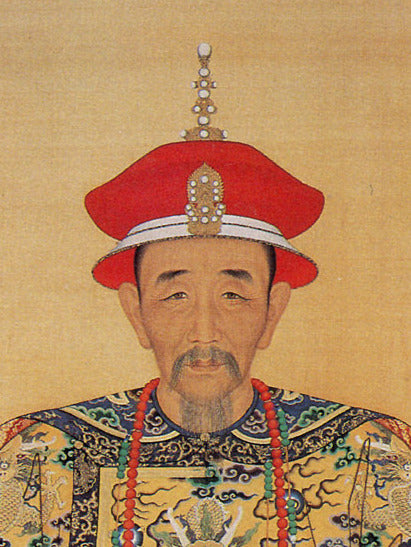
Kangxi Emperor 康熙帝 (1654–1722)
The Kangxi Emperor (1654-1722) was the longest-reigning emperor of the Qing dynasty and one of the most influential rulers in Chinese history. During his reign, he oversaw great economic and social reforms, secured the borders of his empire, and led China through a period of peace and prosperity.
The Kangxi Emperor was born in 1654 and ascended to the throne at the age of seven. During his reign, he worked to strengthen the government and the economy. He created new government offices and appointed competent officials to oversee them. He also implemented important economic reforms, such as the establishment of a fixed currency and the introduction of a land tax. In addition, he encouraged foreign trade and opened up new markets for Chinese goods.
The Kangxi Emperor was also a great military leader. He launched several campaigns against the nomadic tribes of the north, which resulted in the pacification of Manchuria and the consolidation of Chinese control over the region. He also worked to secure the borders of his empire and launched a series of successful military campaigns against the Russians.
The Kangxi Emperor was also a great patron of the arts and sciences. He supported the work of scholars and scientists, and encouraged the development of new technologies and developments in porcelain production. He also supported the study of literature and the arts, and was a great collector of books, paintings, and calligraphy.
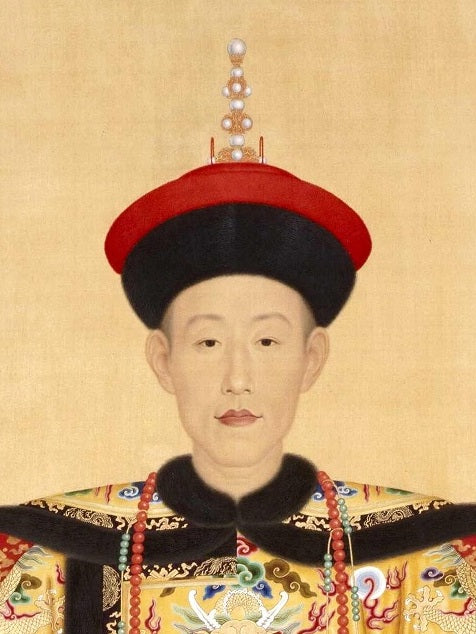
Qianlong Emperor 乾隆帝 (1711–1799)
The Qianlong Emperor (1711-1799) was one of the longest-reigning and most influential emperors of the Qing dynasty. During his reign, the emperor was a great patron of the arts and sciences. He also greatly encouraged the production of porcelain wares, resulting in a period of great innovation and creativity in porcelain production. This article will examine the life and accomplishments of the Qianlong Emperor and his impact on porcelain production.
The Qianlong Emperor was born in 1711 and became emperor at the age of 22. During his reign, he was a great patron of the arts and sciences. He supported the work of scholars and scientists, and was a great collector of books, paintings, and calligraphy. He also encouraged the development of new technologies and supported the study of literature and the arts.
The Qianlong Emperor was also a great supporter of porcelain production. He ordered the establishment of imperial kilns to produce porcelain wares for his court and the royal family. He also commissioned the creation of new and innovative designs for porcelain wares and encouraged the development of new glazing techniques. In addition, he introduced new colors and materials, such as kaolin clay and cobalt blue, which allowed for the production of wares with stunningly vibrant colors and designs.
The Qianlong Emperor’s support of porcelain production resulted in a period of great innovation and creativity in porcelain production. His patronage of the arts and sciences encouraged the development of new technologies and the study of literature and the arts. His support of porcelain production also resulted in the production of some of the finest porcelain wares in Chinese history.
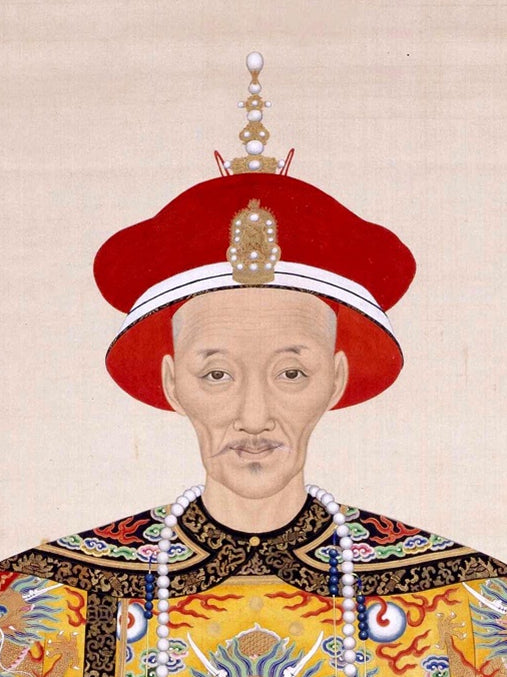
Daoguang Emperor 道光帝 (1782–1850)
The Daoguang Emperor (1782-1850) was a great patron of the arts and sciences, and was particularly interested in porcelain art. He encouraged the production of fine porcelain wares and the development of new techniques and designs. This article will examine the life and accomplishments of the Daoguang Emperor and his impact on porcelain art.
The Daoguang Emperor was born in 1782 and ascended to the throne at the age of 41. During his reign, he was a great patron of the arts and sciences. He supported the work of scholars and scientists and was a great collector of books, paintings, and calligraphy. He also encouraged the development of new technologies and supported the study of literature and the arts.
The Daoguang Emperor was also a great supporter of porcelain production. He ordered the establishment of imperial kilns to produce porcelain wares for his court and the royal family. He also commissioned the creation of new and innovative designs for porcelain wares and encouraged the development of new glazing techniques. In addition, he introduced new colors and materials, such as kaolin clay and cobalt blue, which allowed for the production of wares with stunningly vibrant colors and designs.
The Daoguang Emperor’s support of porcelain art resulted in a period of great innovation and creativity in porcelain production. His patronage of the arts and sciences encouraged the development of new technologies and the study of literature and the arts. His support of porcelain art also resulted in the production of some of the finest porcelain wares in Chinese history.
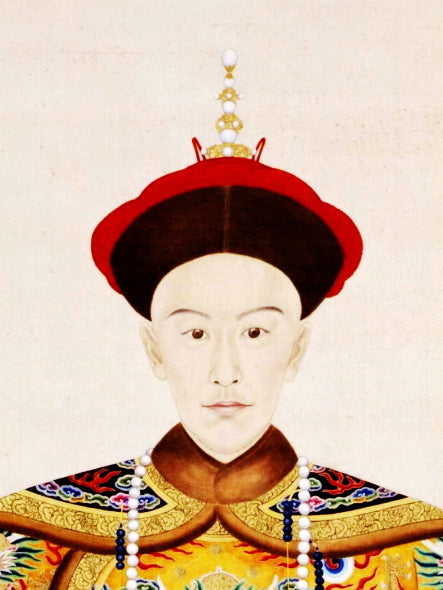
Guangxu Emperor 光緒帝 (1871–1908)
The Guangxu Emperor (1871-1908) was the last emperor of the Qing dynasty. During his reign, he was a great patron of the arts and sciences and encouraged the production of fine porcelain wares. He also implemented important economic reforms, which helped to strengthen the economy and support the production of porcelain wares. This article will examine the life and accomplishments of the Guangxu Emperor and his impact on porcelain production.
The Guangxu Emperor was born in 1871 and ascended to the throne at the age of four. During his reign, he was a great patron of the arts and sciences. He supported the work of scholars and scientists, and was a great collector of books, paintings, and calligraphy. He also encouraged the development of new technologies and supported the study of literature and the arts.
The Guangxu Emperor’s support of porcelain production resulted in a period of huge levels of porcelain production. His patronage of the arts and sciences encouraged a surge in the production of fine porcelain at the tail end of the Qing empire.
Exceptional examples
-

Bulb vase depicting deers made for the Qianlong Emperor - Sotheby's
Imperial vase depicting deer, birds and other animals in a wood and includes gold embroidery around its neck. The vase bears a mark of the Qianlong Emperor who ruled China from 1736 to 1795.
-

Imperial Blue & Gilt Cranes Vase - Dreweatts
Beautiful example of Imperial Qianlong porcelain made for the Qianlong Emperor. The rich cobalt blue often referred to as “sacrificial blue,” deriving from vessels in this colour were used in sacrifices at the Imperial Altar of Heaven.
-

The Yamanaka reticulated vase commissioned by the Qiaolong Emperor - Sotheby's
A rare vase from the Imperial collection of the Chinese Emperor Qianlong, which has remained in a private Japanese collection for almost a century and auctioned at Sotheby's.
Qing objects from the collection
Explore our Qing Chinese porcelain collection, gathered over many years and brought to you by objets de vertu.
Objets de Vertu
Famille Rose 'Dragon' Bottle Vase, Qianlong Mark but 19th Century
Share


Explore more Qing objects
-
Chinese porcelain double dragon water pot in excellent condition, Qianlong mark, but 19th century
Regular price £2,400.00 GBPRegular priceUnit price per -
Chinese porcelain Ge/Guan crackle glazed arrow vase, 18th Century Kangxi
Regular price £3,450.00 GBPRegular priceUnit price per -
Antique Chinese porcelain crackle glaze (Ge / Guan) double gourd vase, 18th/19th century, Qing
Regular price £1,950.00 GBPRegular priceUnit price per -
Chinese blue and white bowl with city wall design, Kangxi mark and likely of the period
Regular price £2,495.00 GBPRegular priceUnit price per
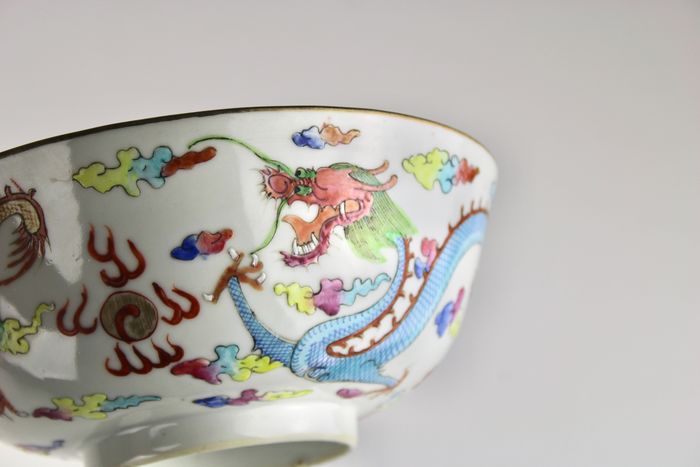
Our promise
We offer a hand curated collection of beautiful objects from porcelain to jades. Buy securly online, from experts in antique and modern oriental arts.

